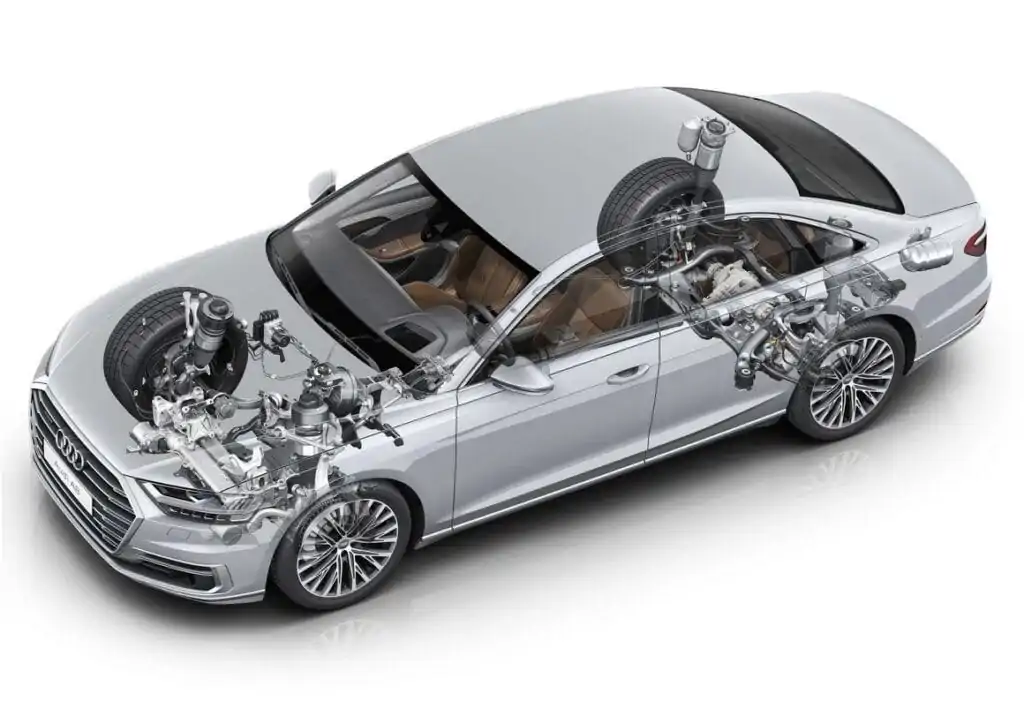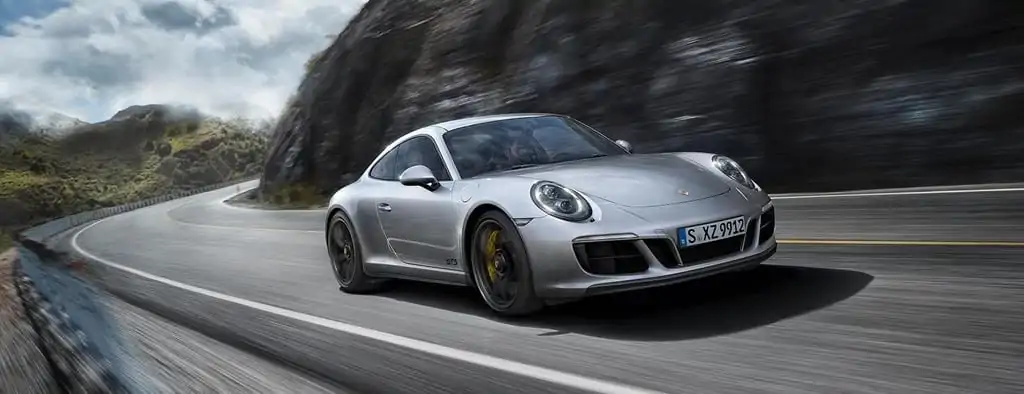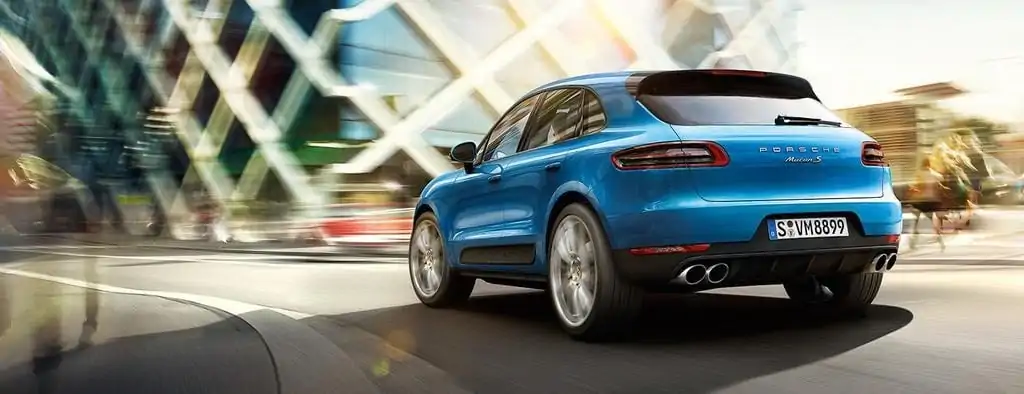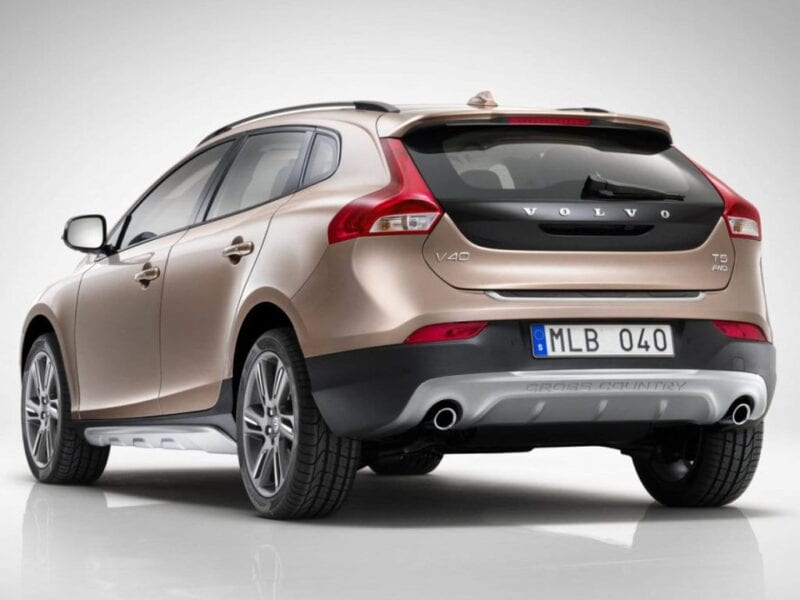
What is an active suspension?
Content
An active suspension is called a suspension whose parameters can change during operation. In other words, the active suspension can control (hydraulically or electromagnetically) the vertical movement of the wheels of the car. This is done using an on-board system that analyzes the road, incline, speed and overall load of the vehicle.
What is an active suspension
This type of suspension can be divided into two main classes: a fully active suspension and a semi-active suspension. The difference between the two classes is that although an active suspension can affect both shock absorbers and any other chassis element, an adaptive suspension can only affect shock absorbers.
Active suspension is designed to increase the level of car safety and provide even greater passenger comfort, and this is achieved by changing the suspension configuration.
This type of suspension, like any other suspension system, is a combination of components and mechanisms that ensure the comfort and safety of the driver and passengers in the car.
Manageability and stability of the car largely depend on the quality of the suspension. That is why more and more car manufacturers and owners are turning to an adjustable suspension that can be adapted to any type of road surface.
The device and principle of operation of the active suspension
As a device, the active suspension does not differ significantly from the standard suspension that most modern cars are equipped with. What is missing in other types of suspension is the on-board control of the suspension elements, but more on that a bit more ...
At the beginning, we mentioned that an active suspension can automatically change its characteristics (adapt) on the go.
To do this, however, she must first collect the necessary information about the current driving conditions of the vehicle. This is done using various sensors that collect data about the type and smoothness of the road surface on which the car is moving, about the position of the car body, driving parameters, driving style and other data (depending on the type of adaptive chassis). )
The data collected by the sensors goes to the electronic control unit of the car, where they are processed and fed to shock absorbers and other suspension elements. As soon as a command to change the parameters is given, the system begins to adapt to the specified suspension mode: normal, comfortable or sports.
Active suspension elements
- electronic control;
- adjustable rod;
- active shock absorbers;
- sensors.
The adaptive system electronic unit controls the suspension modes. This element analyzes the information transmitted to it by the sensors and sends a signal to the driver’s manual control device.
The adjustable rod changes its degree of rigidity depending on the signal supplied to it by the electronic unit. Modern adaptive suspension control systems receive and process signals very quickly, which allows the driver to change the suspension settings almost immediately.

Adjustable shock absorbers
This element can quickly respond to the type of road surface and the way the car moves, changing the degree of rigidity of the suspension system. The shock absorbers used in the active suspension are active shock absorbers with an electromagnetic valve and shock absorbers with magnetic rheological fluid.
Shock absorbers of the first type change the stiffness of the suspension by means of an electromagnetic valve, and the second type is filled with a special fluid that changes its viscosity under the influence of a magnetic field.
SENSORS
These are devices designed to measure and collect data that are necessary on the on-board computer to change the settings and parameters of the suspension if necessary.
We hope that we were able to bring a little more clarity to the question of what an active suspension is, but let's see how this suspension works as a whole.
Imagine that you are driving on a highway and your trip is relatively smooth (as smooth as possible on regular tracks). However, at one point, you decide to exit the highway and take the third class road dotted with potholes.
If you have a standard suspension, you have no choice but to see that the vibrations in the cabin increase, and your car will bounce more often and more unpleasantly. You should also be careful when driving and drive slower and more carefully, as there is a danger of losing control of the car in case of any bumps.
However, if you have active suspension, this change in the type of pavement you're riding on won't affect you in any way, because as soon as you leave the highway, you can simply readjust the dampers and they'll be "harder". or vice versa - if you are driving on a bumpy road on the highway, you can readjust the suspension so that it becomes "softer".
All this is possible thanks to the active suspension, which can automatically adapt to your road and driving style.
Of course, as we mentioned at the beginning, how much the suspension will be able to adapt depends on whether it is active or adaptive. In the first case, you can adjust the entire suspension, and in the second, only the shock absorbers.
Active suspension
The main differences between standard and active suspension
The standard suspension, which is installed on all cars of the lower and middle class, can ensure the stability and comfort of the car while traveling, but there is one significant drawback. Since there are no adaptive functions, depending on the type of shock absorbers that the car is equipped with, it can provide good handling and comfort on the road and in good condition, as well as comfort when driving on rough roads.
On the contrary, an active suspension can provide complete comfort and good handling, regardless of the level of road surface, driving method or type of car.

Wherever you are, the active suspension system is extremely innovative and can provide extremely high comfort and complete travel safety.
The only drawbacks of this type of suspension that we can mention are the high price, which can significantly increase the initial price of the car and the solid amount of maintenance that every owner of an active suspension should expect to pay. in future.
Active suspension application
Since the price of the active suspension is quite high, today such a suspension mainly boasts models of luxury cars of such brands as Mercedes-Benz, BMW, Opel, Toyota, Volkswagen, Citroen and others.
Depending on the design of individual car brands, each manufacturer uses an active suspension of their own design in their car models.
For example, the AVS system is used mainly by Toyota and Lexus, BMW uses the Adaptive Drive Active Suspension System, Porsche uses the Porsche Active Suspension Management System (PASM), OPEL uses the Continuous Damping System (DSS), Mercedes-Benz uses the Adaptive Damping System (ADS). etc.
Each of these active systems is designed for the needs of a particular brand of car and can perform various functions.
BMW adaptive suspension, for example, adjusts the stiffness of the shock absorbers and provides driving comfort. Adaptive Drive has an electronic system, and with the help of switches, the driver can choose the most convenient option for driving: normal, comfortable or sporty.
Suspension Opel Continuous Damping Control (DSS) allows you to adjust the damper settings separately from each other. Opel is preparing a new generation of active suspension - FlexRide, in which the suspension mode can be selected at the touch of a button.
The PASM Porsche system can communicate with all wheels of the car and adjust both the stiffness of the shock absorbers and the ride height.
In the active Mercedes ADS suspension, the spring stiffness is changed using a hydraulic drive that provides oil pressure in the shock absorbers under high pressure. A spring mounted coaxially on the shock absorber is affected by the hydraulic fluid of the hydraulic cylinder.
The hydraulic cylinders of the shock absorbers are controlled by an electronic system that includes 13 sensors (for body position, longitudinal, transverse, vertical acceleration, overlay, etc.). The ADS system completely disables the body roller under various driving conditions (turning, accelerating, stopping), and also adjusts the position of the body height (the vehicle lowers by 11 mm at speeds above 60 km / h)

One of the most interesting projects of the active suspension system offered by Hyundai on its cars. The AGCS active geometry suspension system allows the driver to change the length of the suspension arms, thereby changing the distance to the rear wheels. The electric drive is used to change the length.
When driving in a straight line and when maneuvering at low speed, the system sets the minimum convergence. However, when the speed increases, the system adapts, reducing the distance to the rear wheels, thus gaining additional stability.
A Brief History of Active Suspension
The history of this type of suspension began more than two decades ago when Lotus engineers equipped their F1 racing cars with an active suspension. Unfortunately, the first attempts were not very successful, as the suspension was not only very noisy and had problems with vibration, but also consumed too much energy. With the addition of extremely high production costs, it becomes clear why this type of suspension was not widely used.
Nevertheless, with the improvement of technology and thanks to the constant development of the engineering departments of large automotive giants, the initial defects of the adaptive suspension were overcome, and it began to be installed on some luxury car models. They were the first to install an active suspension from Citroen, then Mercedes, BMW, Toyota, Nissan, Volkswagen, etc.
Today, more and more luxury car brands are equipped with adaptive suspension. Unfortunately, the price of this type of suspension is still too high for the average consumer, but we hope that in the near future we, the middle class, will be able to afford to buy a car with an active suspension.
Questions and answers:
What is a suspension? These are shock absorbers, springs, levers fixed by means of damping elements (they have a soft rubber part that absorbs vibrations) on the body or frame of the car.
What is the car suspension for? While driving on the road on a car, shocks and shocks come from the wheels due to irregularities on the surface (pits and bumps). The suspension provides the vehicle with a smooth ride and constant contact of the wheels with the road.
What types of pendants are there? Standard double wishbone, multi-link, De Dion, dependent, semi-dependent and McFcrson strut. Many cars use a combined suspension (MacPherson strut in front and semi-independent in the back).

